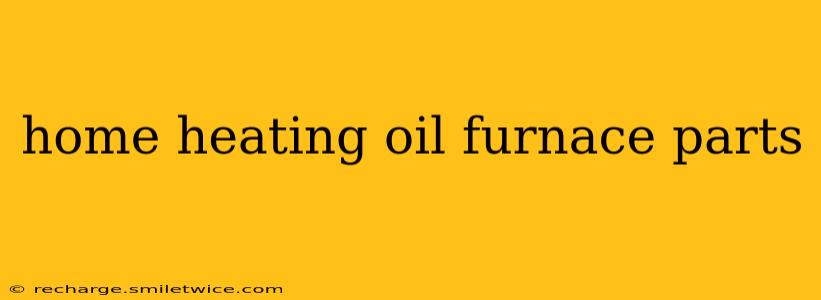Home heating oil furnaces, while reliable, require regular maintenance and occasional part replacements. Understanding the components of your system is crucial for efficient operation and timely repairs. This comprehensive guide explores the essential parts of a home heating oil furnace, addressing common questions and providing valuable insights for homeowners.
What are the main components of a home heating oil furnace?
A home heating oil furnace comprises several interconnected components working in harmony to generate and distribute heat. The key components include:
-
Burner: The heart of the system, the burner atomizes the fuel oil and ignites it, producing heat. Different burner types exist, each with its own maintenance requirements and efficiency levels.
-
Heat Exchanger: This critical component absorbs the heat generated by the burner and transfers it to the air circulating through the furnace. Heat exchangers can be made of various materials and are susceptible to corrosion and cracking over time.
-
Motor/Blower: This motor pushes heated air through the ductwork and into your home. The blower is responsible for distributing warm air evenly throughout the living spaces.
-
Ignition System: This system ignites the atomized oil, usually using a glow plug or electronic igniter. Malfunctions in the ignition system can prevent the furnace from starting.
-
Oil Tank: This holds the fuel supply for the furnace. Proper maintenance and regular inspections are essential to prevent leaks and ensure a steady fuel supply.
-
Oil Pump: This pump delivers fuel oil from the tank to the burner at the required pressure for efficient combustion.
-
Filter: A crucial component, the oil filter removes impurities from the fuel oil, preventing clogging and damage to the burner and other parts.
-
Pressure Switch: Monitors the air pressure within the system and ensures proper airflow. Problems with the pressure switch can lead to erratic operation or shutdown.
-
Thermostat: This controls the furnace's operation, maintaining the desired temperature in your home. Programmable thermostats can significantly improve energy efficiency.
-
Control Board: The control board manages the various functions of the furnace, coordinating the actions of different components to ensure safe and efficient operation.
What are common problems with home heating oil furnace parts?
Several issues can arise with various components, often requiring professional servicing. Some common problems include:
-
Burner Problems: Soot buildup, clogged nozzles, and faulty igniters can impair burner efficiency and lead to incomplete combustion.
-
Heat Exchanger Issues: Cracks or corrosion in the heat exchanger can lead to carbon monoxide leaks, a serious safety hazard.
-
Motor/Blower Failure: A malfunctioning blower can prevent adequate heat distribution.
-
Oil Pump Malfunctions: A faulty oil pump can prevent fuel from reaching the burner, leading to system failure.
-
Clogged Filters: Dirty filters restrict oil flow, impacting efficiency and potentially damaging the burner.
How often should I replace my home heating oil furnace parts?
The lifespan of each part varies, and regular maintenance significantly impacts longevity. However, some parts require more frequent replacement than others:
-
Oil Filters: Should be replaced annually, or even more frequently if using older or less refined oil.
-
Burner Nozzles: Regular cleaning is vital, and nozzle replacement might be needed every few years, depending on usage and fuel quality.
-
Heat Exchanger: Typically has a lifespan of 15-20 years, but corrosion can shorten its life.
-
Other Components: The lifespan of other parts varies greatly depending on usage, maintenance, and overall system condition.
How can I tell if a part needs replacing?
Identifying the need for replacement relies on recognizing certain symptoms:
-
Unusual Noises: Clicking, banging, or whistling sounds might indicate problems with the burner, motor, or other components.
-
Inconsistent Heating: Uneven heat distribution or frequent cycling on and off suggests problems with the blower, heat exchanger, or thermostat.
-
Reduced Efficiency: Noticeably higher fuel consumption might point to problems with the burner, heat exchanger, or filters.
-
Smell of Fuel Oil: A persistent smell of fuel oil indicates a potential leak in the system.
What is the average cost to replace home heating oil furnace parts?
Costs vary significantly depending on the part, the brand, and the labor involved. It's best to contact a qualified HVAC technician for an accurate estimate. Generally, smaller parts are more affordable to replace than larger components like the heat exchanger.
This guide offers a broad overview. For specific concerns or troubleshooting, consult a qualified HVAC technician. Remember, regular maintenance is crucial for ensuring the safe and efficient operation of your home heating oil furnace.
